
SJX
[Purist]
8540

A look at the intricacies of the Rotonde de Cartier Heure Sautantes
Launched at SIHH 2010, the Rotonde de Cartier Heure Sautantes of the Fine Watchmaking collection is the latest in a long line of Cartier jump hour watches. Beginning with pocket watches of the early 20th century to the various jumping hour Tank models of the discontinued Collection Privée Cartier Paris (CPCP), jump hour watches have long been a part of Cartier’s line-up.
Below: The contemporary jump hour and its inspiration from 1923
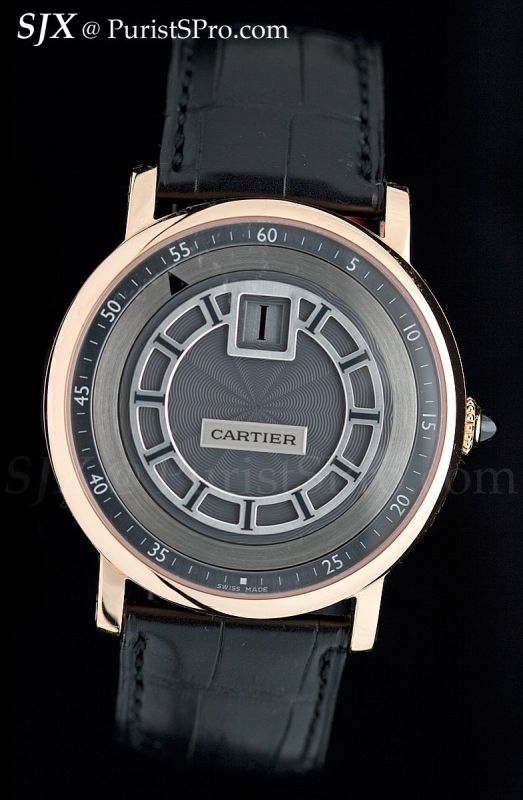
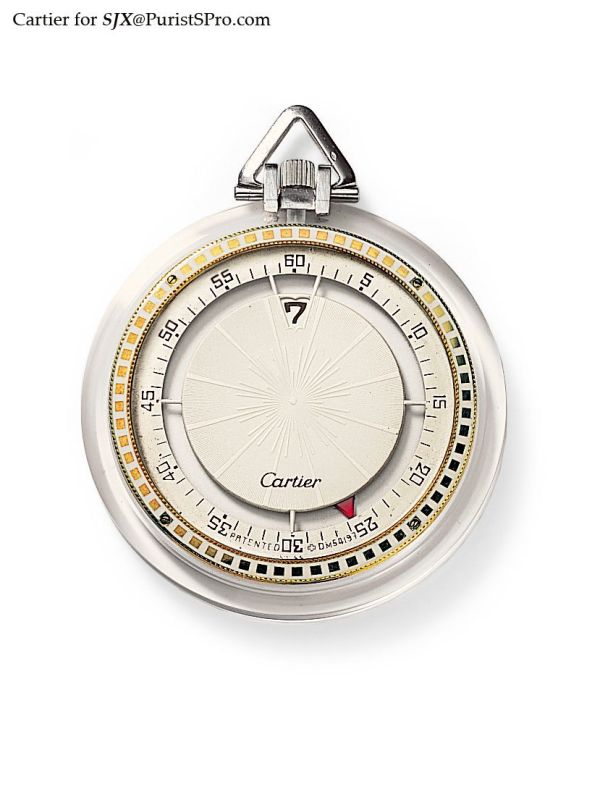
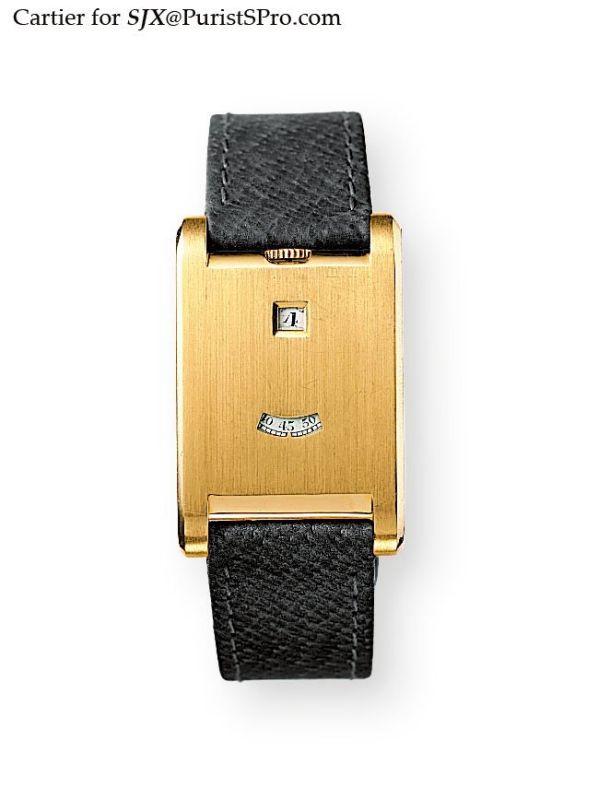
Above: Tank a Guichet jump hour c. 1928
The Heure Sautantes is in fact inspired by a 1923 pocket watch; if the CPCP line had not been discontinued the Heure Sautantes might have looked a lot more like the pocket watch. Instead, the Heure Sautante has been given a multi-level, slate and silver dial, which is a trademark of the Fine Watchmaking collection.

Many of the watches in the Fine Watchmaking collection are large, at 42 mm wide and 11.6 mm thick, the Heure Sautantes is a much more wearable size.

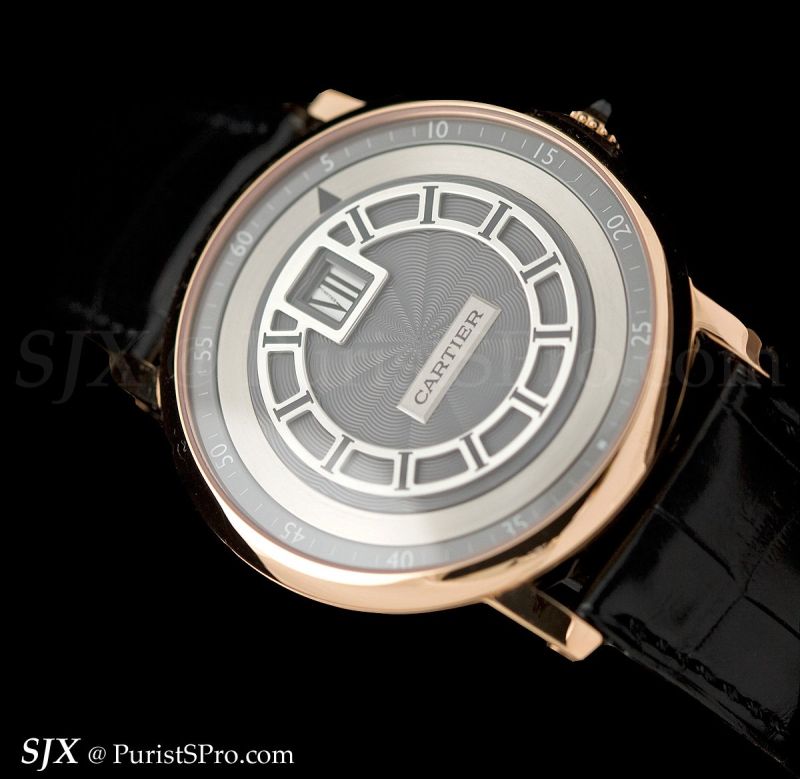
Inside the Heure Sautantes sits the 9905 MC, a slim, in-house manually wound movement with a fairly long power reserve.
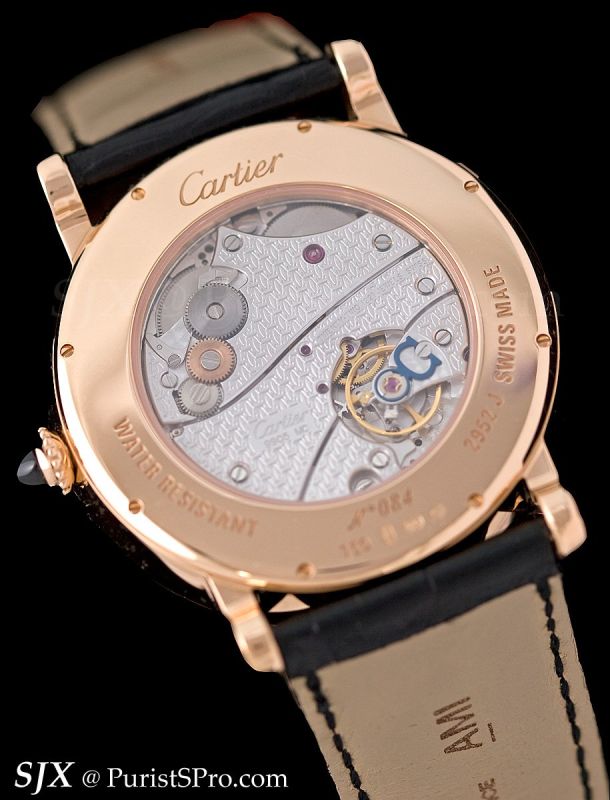
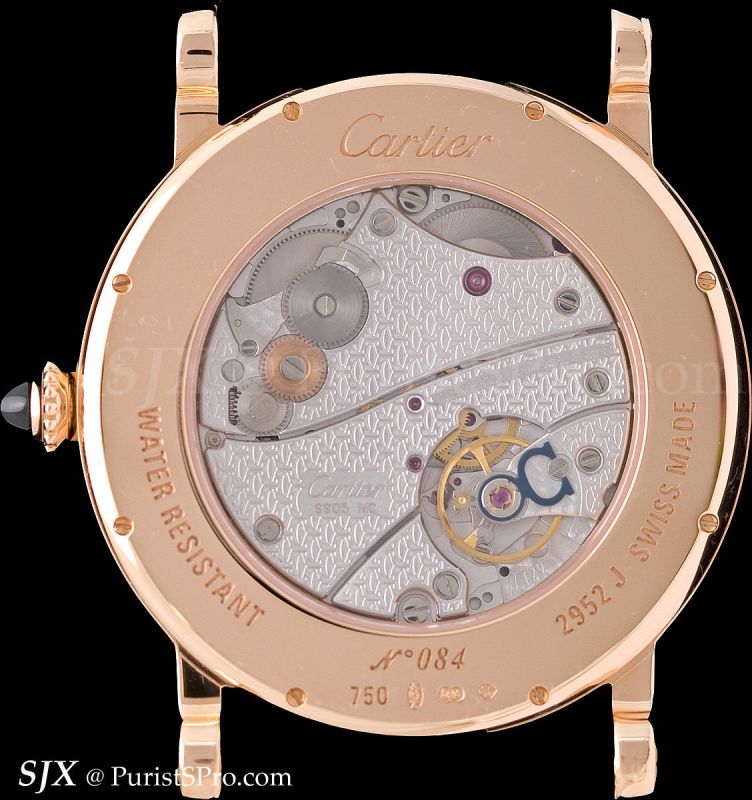
9905 MC Specifications
· 65 hour power reserve
· 22 jewels
· 217 parts
· 31.8 mm wide
· 5.10 mm high
The movement is decorated with the Cartier logo embossed across the bridges, formerly used for the CPCP line because the Heure Sautantes was originally intended to be part of the CPCP collection. Cartier, however, decided to stick with this decoration even though the CPCP was discontinued. But this decorative motif is unlikely to be found on many Cartier watches in the future, especially after the pipeline of watches originally intended to be part of the CPCP line is exhausted.
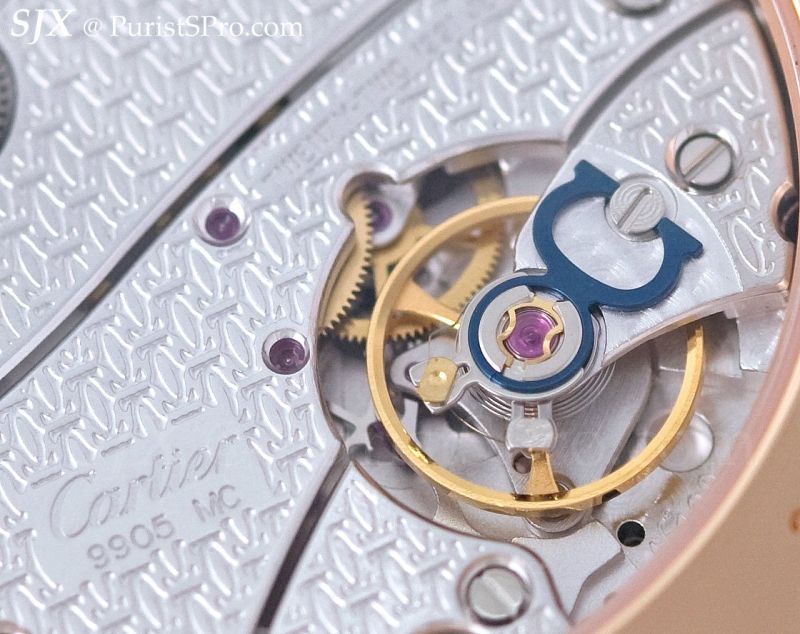
Over on the front, the watch looks deceptively simple. The dial is comprised of various textures, primarily guilloche and matte brushing, but several types of brushed finish are used.
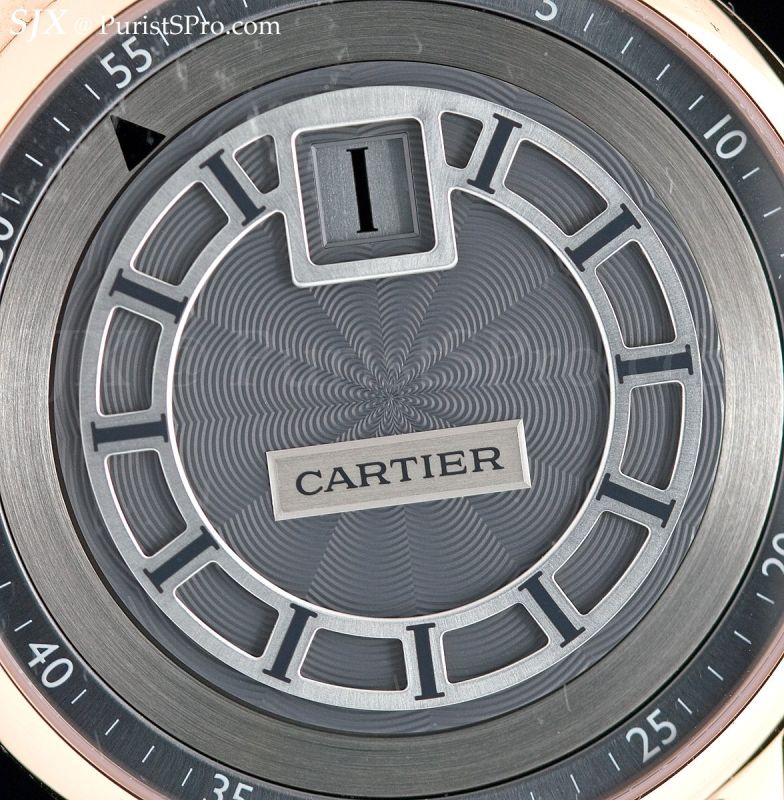
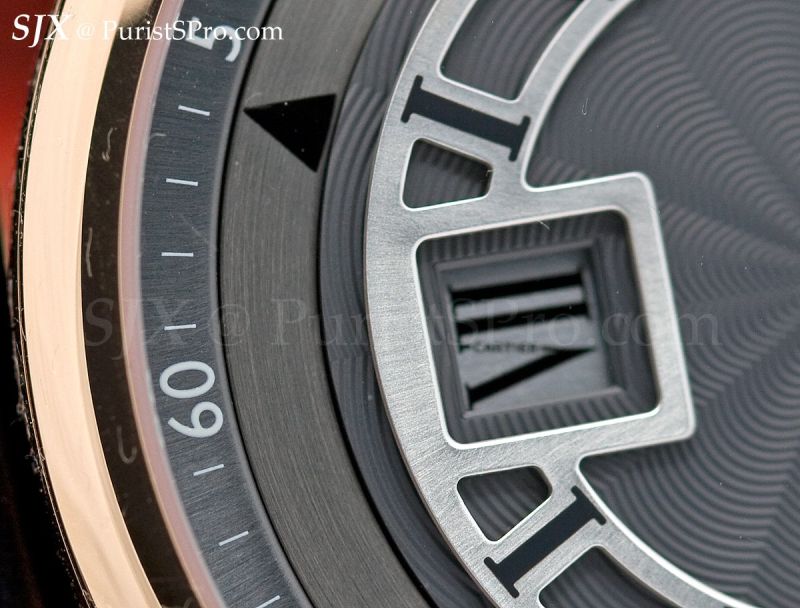
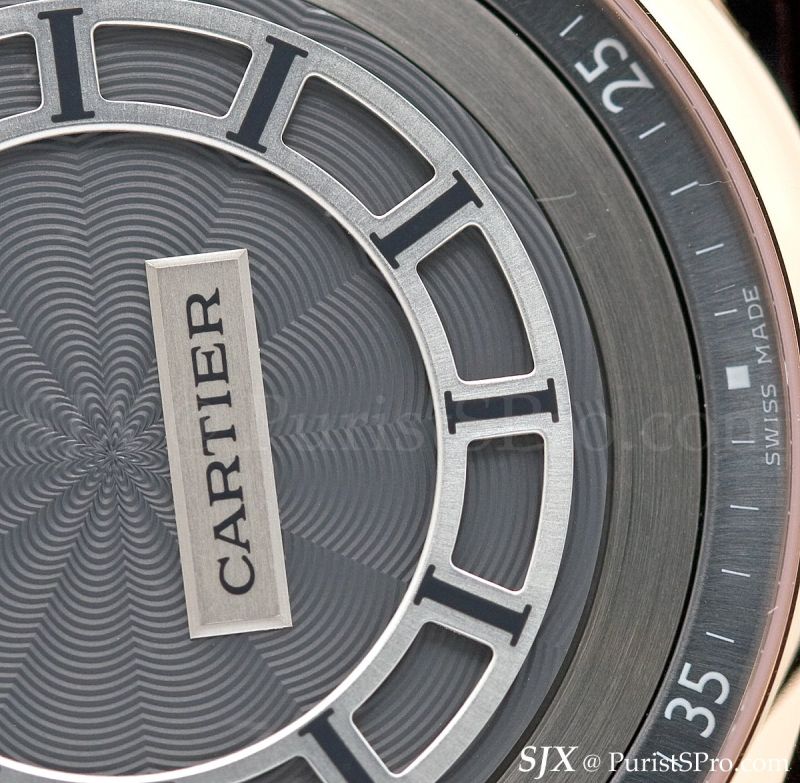
Underneath the dial, however, it gets more interesting. For lightness, both discs of the Heure Sautantes, minutes and hours, are aluminium. But the hour disc, being hidden, is skeletonised for maximum weight savings. Also notable is the shape and size of the spring levers, less refined jump hour mechanisms use cheap wire springs.
Unlike typical jump hour watches, which are driven by a single star shaped wheel and spring, the Heure Sautantes has a pair of them. Created by Carole Forestier, this unusual set up works as follows:
Wheel A: The jump hour disc is affixed to wheel A.
Wheel B: This drives the jump hour disc. Energy is accumulated in the spring lever as wheel B rotates; wheel B is driven by the gear train similar to a regular hour hand of a watch. Once the spring lever drops, wheel B turns wheel A causing the jump hour disc to turn. The jumping impulse is thus broken into two steps.

Above: The jump hour plate showing only the star wheels and spring levers
Both spring levers are pivoted with eccentric screws to adjust the position of each lever for optimal tension.
This mechanism has three distinct advantages over a conventional jump hour. First, the constant tension provided by the spring lever in contact with wheel A centres the jump hour disc and eliminates unwanted movement of the disc.
Also, the hour disc jumps instantaneously at the top of the hour, because the energy to turn the disc is being accumulated on the spring attached to wheel B. Remember that the disc is affixed to wheel A. There is no wobble in the disc in the minutes or seconds leading up to the jump, as is the case with traditional jump hours driven by one star wheel and spring.
The other advantage is technical. The use of a pair of star wheels and levers means that less torque is required to turn the hour disc, since the jumping impulse is in two steps, resulting in a much smaller drop in amplitude. As energy is stored in the lever B and instantly released to wheel A which causes the disc to rotate, there is less drag on the movement compared to a set up with a single star wheel and spring. In the lead up to the jump, the amplitude of the balance drops 50 to 60 degrees in a conventional jump hour movement, while the balance of the 9905 MC of the Heure Sautantes only drops about 30 degrees.
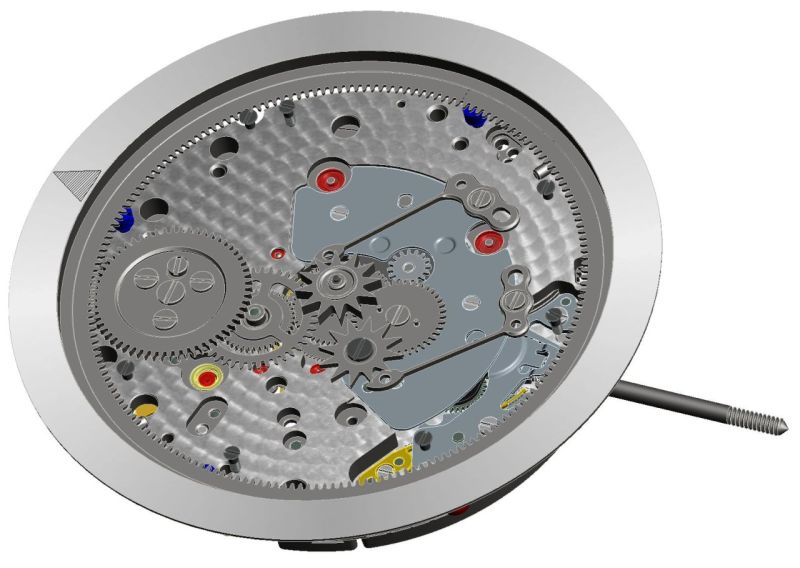
The mostly complete jumping hour mechanism - the large toothed wheel on the perimeter drives the minute disc
Like many of the other watches in the Fine Watchmaking collection, the Heure Sautantes is carefully conceived and executed with much hidden detail. Cartier is certainly on the right track in re-establishing itself as a preeminent watchmaker.
- SJX
This message has been edited by SJX on 2010-08-21 23:53:43

A look at the intricacies of the Rotonde de Cartier Heure Sautantes

Thansk again dude. One of my preferred pieces form Catrier

i actually like it somewhat!!

I like the look

Gorgeous watch, love the layered dial, the jump hour system and the case, definately

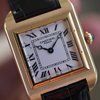
Great read SJX
